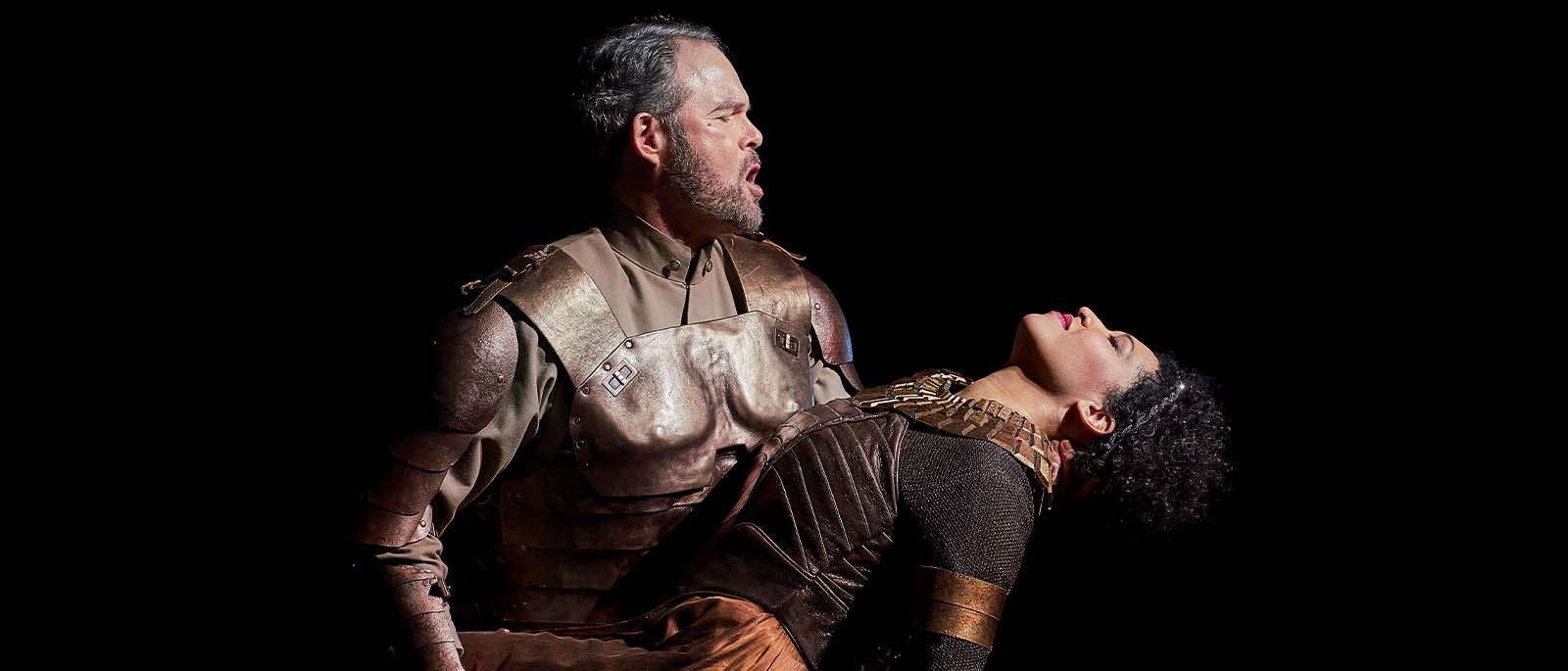
John Adams
Antony and Cleopatra
Upcoming Performances
Overview
The most recent opera by preeminent American composer John Adams—a glorious adaptation of Shakespeare’s immortal drama—has its Met premiere. Following her debut in the company premiere of Adams’s El Niño in 2024, soprano Julia Bullock stars as the irresistible Cleopatra, one of theater’s most complex and captivating characters, opposite bass-baritone Gerald Finley as the conflicted Antony. Adams himself takes the podium to conduct his lyrical and richly orchestrated score, leading a new staging by groundbreaking director Elkhanah Pulitzer that transports the story of troubled romance and political strife from ancient Rome to the Golden Age of Hollywood in the 1930s. Tenor Paul Appleby is Caesar, who goes to war with Antony, and mezzo-soprano Elizabeth DeShong is Caesar’s sister and Antony’s forsaken wife Octavia.
Opera in Two Acts
Composed by John Adams
Libretto adapted by John Adams from Shakespeare
With supplementary passages from Plutarch, Virgil, and other classical texts
Production a gift of the Rosalie J. Coe Weir Endowment Fund
Production sponsored by Rolex
Additional support from the Carol Franc Buck Foundation, Gordon P. Getty, and the Francis Goelet Endowment Fund
Antony and Cleopatra is part of the Neubauer Family Foundation New Works Initiative
Commissioned by the Metropolitan Opera, San Francisco Opera, and Liceu Opera Barcelona
A co-production of the Metropolitan Opera, San Francisco Opera, and Liceu Opera Barcelona
Languages
Languages sung in Antony and Cleopatra
Sung In
English
Titles
Title languages displayed for Antony and Cleopatra
Met Titles In
- English
- German
- Spanish
Timeline
Timeline for the show, Antony and Cleopatra
Estimated Run Time
3 hrs 5 mins
-
House Opens
-
Act I
80 mins
-
Intermission
30 mins
-
Act II
75 mins
-
Opera Ends
Cast
Select a date from the dropdown to filter cast by date of performance
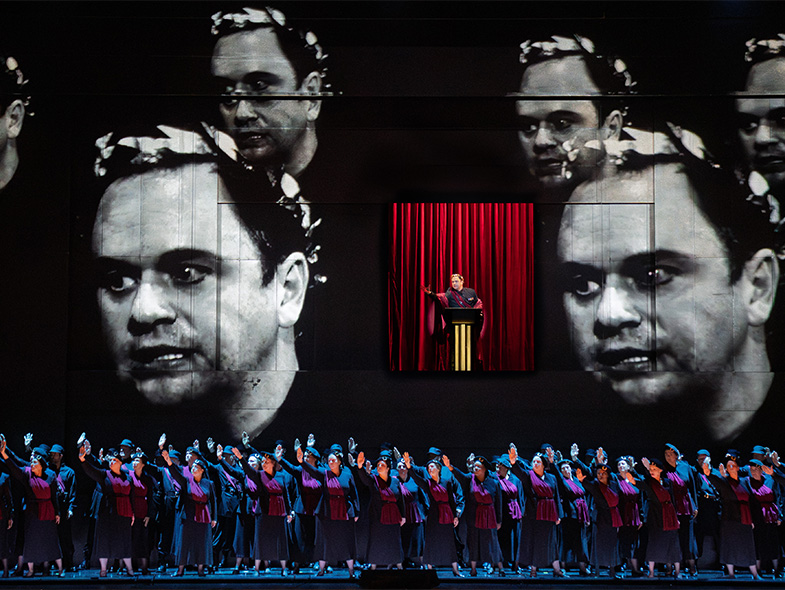
The legendary love affair between Cleopatra, the last queen of Egypt, and Mark Antony, the Roman general and leader, has fascinated the world for millennia. Shakespeare’s play about the couple—one of his great mature tragedies—formed the basis for John Adams’s opera, and taking a page from the Bard’s great drama, which has comparatively few monologues, the composer largely eschews stand-alone set pieces in favor of a dynamic, fast-moving score that still manages to capture the grandeur and high stakes of the clash of empires—not to mention the incandescent romance of two great lovers.
Creators
John Adams (b. 1947) is among the most celebrated composers active today. His remarkable catalog spans opera, chamber music, large-scale orchestral works, and film scores. Antony and Cleopatra is the fifth of his works to be presented at the Met. Stage director Elkhanah Pulitzer (b. 1972) and dramaturg Lucia Scheckner (b. 1981) collaborated with Adams on the creation of the libretto. They adapted the tragedy by William Shakespeare (1564–1616), the towering dramatist of English literature whose plays have inspired composers for centuries.

Production
Elkhanah Pulitzer
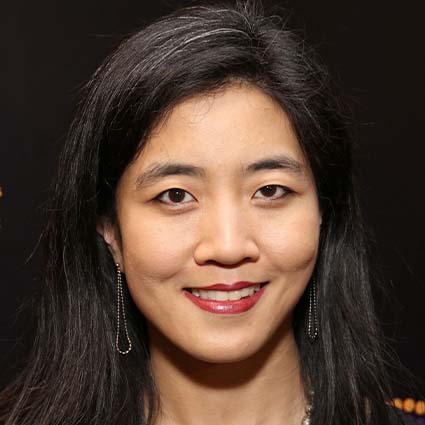
Set Designer
Mimi Lien

Costume Designer
Constance Hoffman

Lighting Designer
David Finn

Projection Designer
Bill Morrison

Sound Designer
Mark Grey

Choreographer
Annie-B Parson

Dramaturg
Lucia Scheckner

Fight Director
Chris Dumont
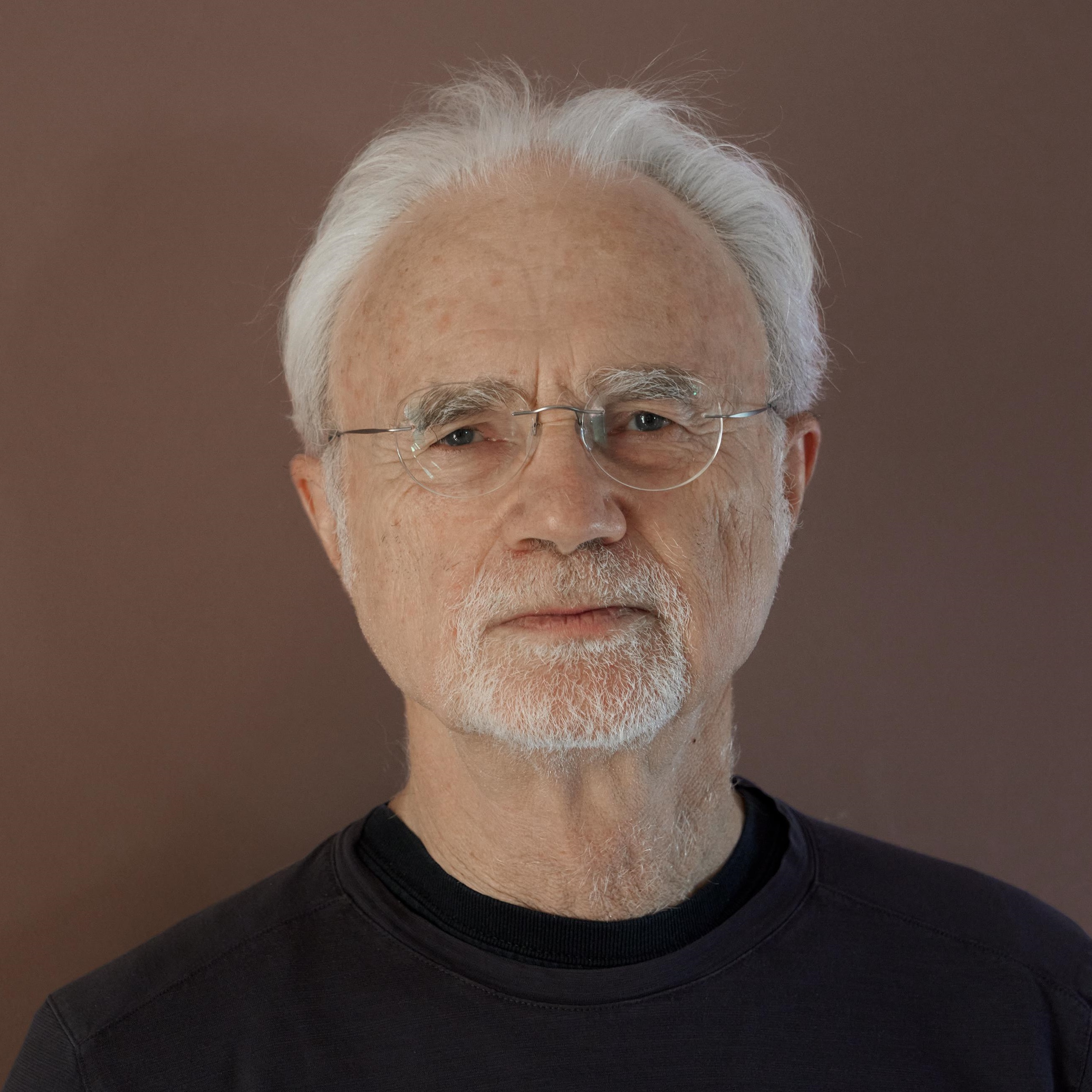
Composer
John Adams
Setting
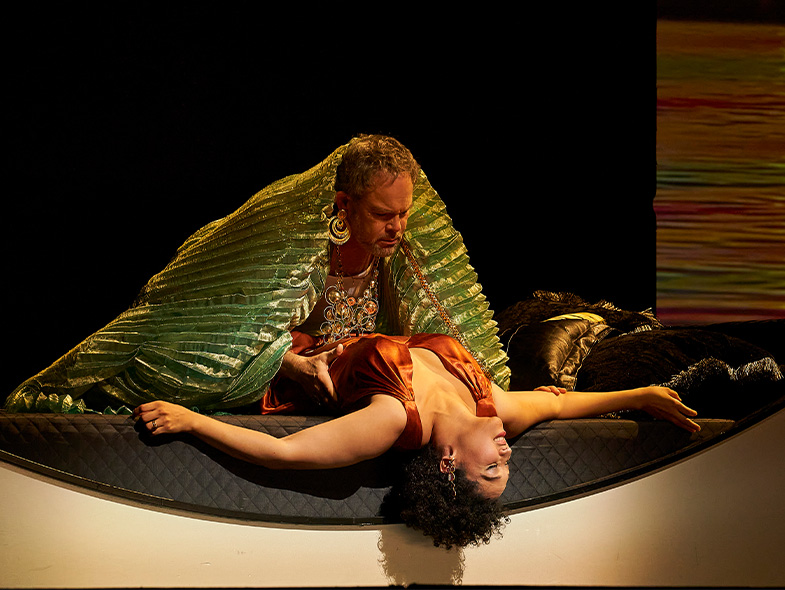
The historical events at the core of the drama occurred in Alexandria, Rome, and at sea near Actium in west-central Greece, leading up to the year 30 B.C.E. The conflicts and loves of Queen Cleopatra with Julius Caesar, Mark Antony, and Caesar Augustus have fascinated the public ever since, and the opera, therefore, acknowledges the essentially timeless nature of the story. In the same vein, Elkhanah Pulitzer’s production updates the action from the ancient world to the Golden Age of Hollywood in the 1930s, when the lives of the first generation of movie stars were sometimes as lurid as those of the characters they portrayed on the silver screen.
Videos
Articles
Music
The score of Antony and Cleopatra is instantly recognizable as the work of John Adams yet also represents an evolution in his lyrical approach. The orchestra expresses both public and inner drama throughout. Aiming for unity of melody, harmony, and text in the individual vocal lines, Adams’s writing for the soloists is based on natural expression, neither looking to recreate traditional operatic pyrotechnics nor over-heightened modernist expressionism. And appropriately for an opera set among two powerful civilizations, the chorus also plays a featured role, as in the climactic Battle of Actium toward the close of the first act.
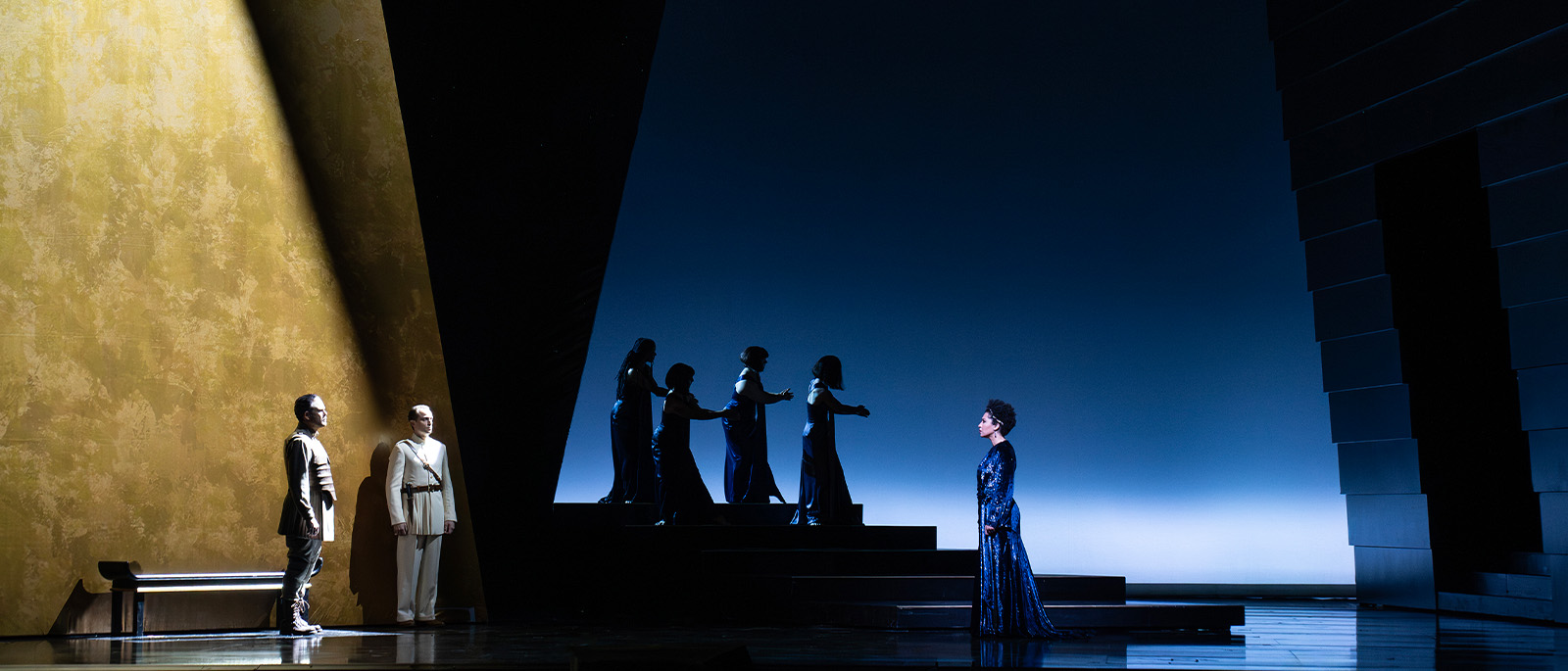
Share This Page
Social Share
Copied